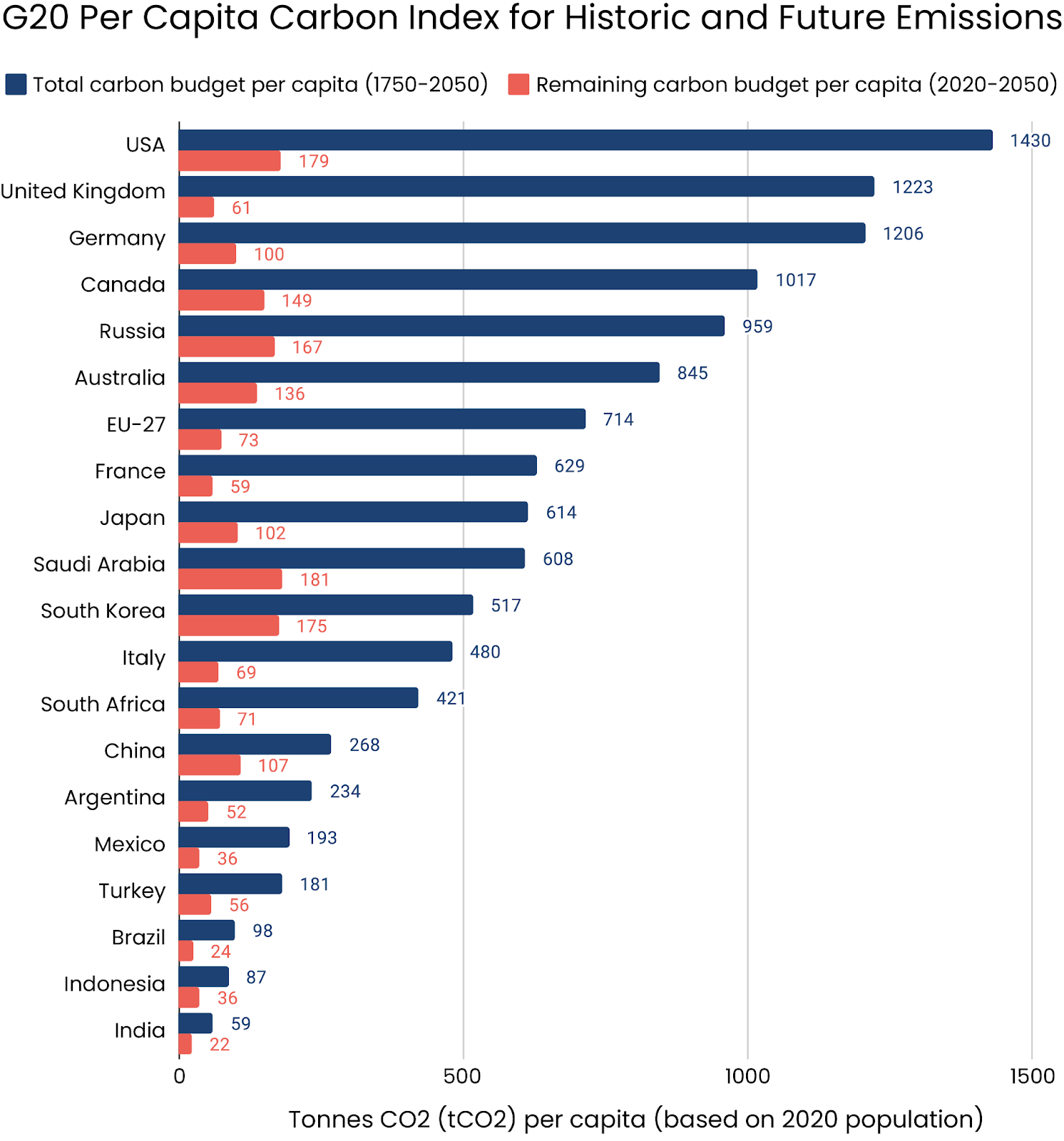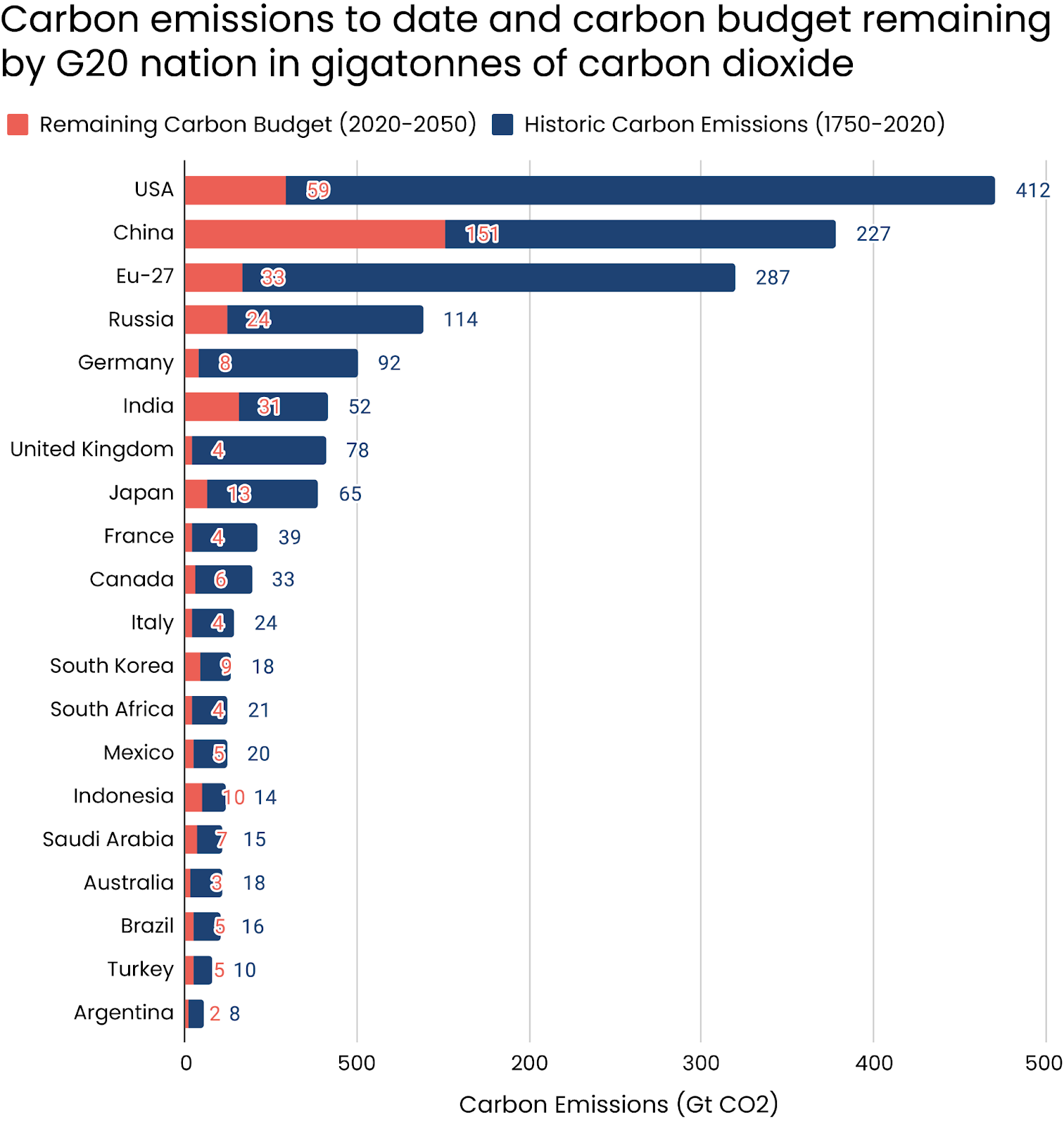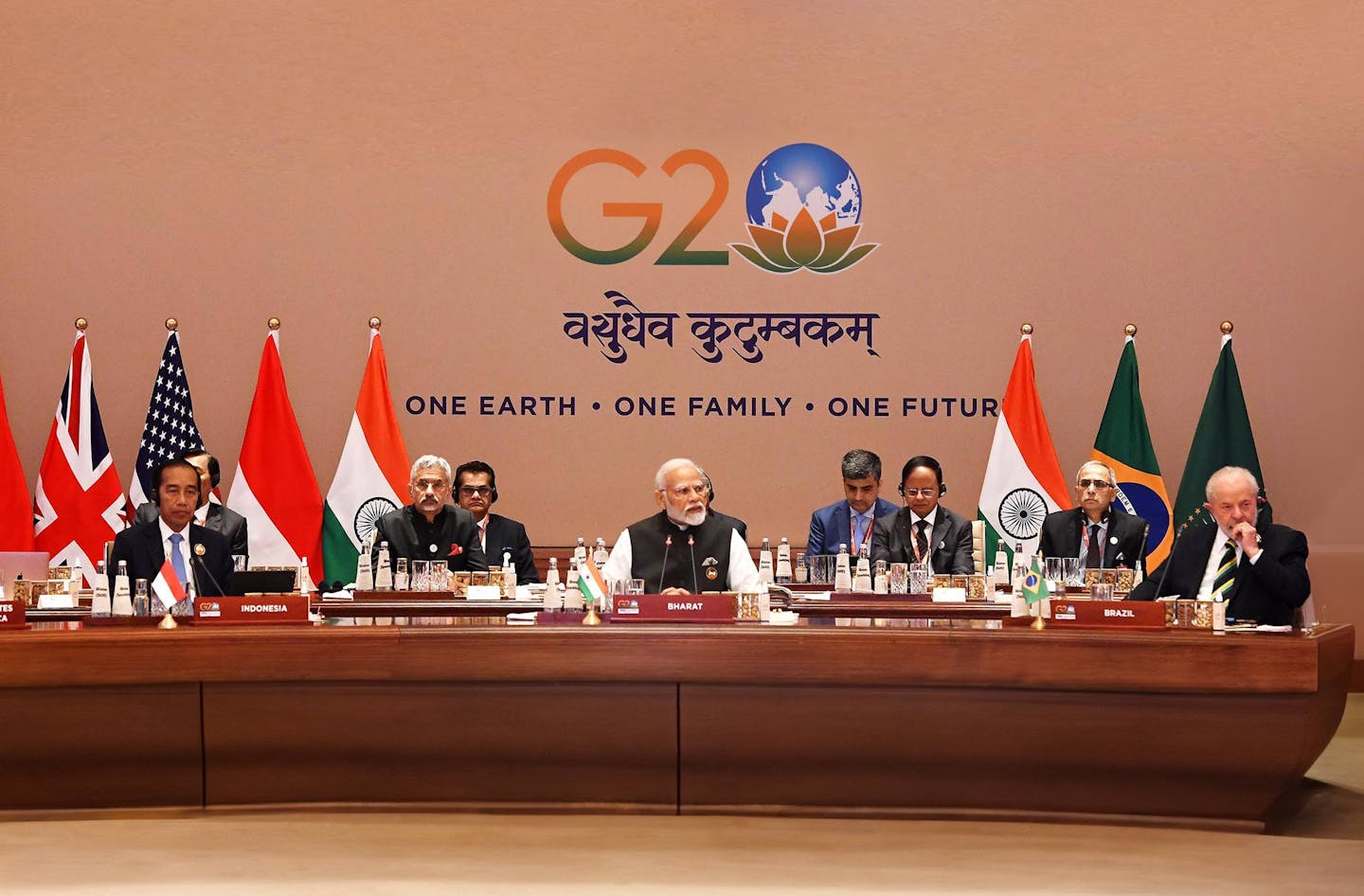One Earth G20 models: a “fair share” roadmap for socially just climate transitions at the national level
After a record-breaking summer, climate change was top of everyone’s mind as the world’s major economies gathered in Delhi for the G20 summit, an intergovernmental forum for economic cooperation between the world's wealthiest nations.
In advance of the summit, The Institute for Sustainable Futures at the University of Technology Sydney (UTS) released a new “fair share” carbon budgets alongside detailed One Earth transition models for each of the world’s major economies. These models assign decarbonization rates based on historic emissions.
According to the Intergovernmental Panel on Climate Change (IPCC), world governments must keep future emissions below 400 Gt of CO2 above 2019 levels if we are to limit global warming to 1.5˚C. At current rates, we’ll blow through that budget in five years.
It is crucial for the G20 governments to agree on how to fairly divide the remaining carbon budget, given that some countries’ historic emissions vastly outsize those of their peers. In their new report, scientists took a look at the historic emissions per capita of the G20 members and found that countries like the United States, France, Germany, Saudi Arabia, Japan, and Australia have already emitted their fair share, while Mexico, China, Argentina, Turkey, India, and Indonesia haven’t.

Data: Sven Teske Image: Spencer R. Scott
To help G20 countries chart a course to net zero, UTS has devised country-specific decarbonization pathways for each G20 country and the EU27 region. These models which comprise the One Earth Climate Model (OECM), which One Earth helped spearhead, comprise the “first and most detailed of their kind with each pathway broken down into sub-pathways for 19 industry and service sectors.”
Sven Teske, scientist lead of the OECM, used the model to fairly distribute the remaining carbon budget among the G20 countries based on historic emissions and current population size. A first-of-its-kind “per capita carbon index” was devised for each country that gives developing countries with lower historic emissions a longer runway to decarbonization and a shorter runway for those with larger historic emissions.

Data: Sven Teske Image: Spencer R. Scott
Even so, historically large emitters like the United States are given a sizable share of the future carbon budget due to the reality of their decarbonization pathways. If the world economies decarbonize along this plan, the United States will have the highest per capita carbon index of any country in the world, with 1,430 tCO2 per capita (based on 2020 population data), whereas China will be responsible for only 268 tCO2 per capita, and India a mere 59 tCO2 per capita.
A perfectly fair distribution of the remaining carbon budget is no longer possible, but that shouldn’t stop the G20 nations from adopting realistic pathways to net zero that are as fair as possible. Developed nations should decarbonize rapidly, and developing nations should be given a bit more time to make the transition, even though there is ample evidence that energy use and economic growth can be decoupled.
Explore the One Earth Climate Solutions Framework


